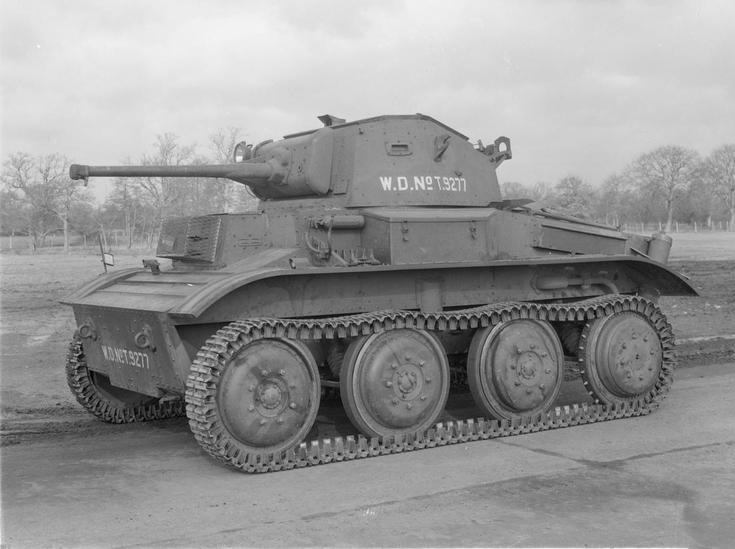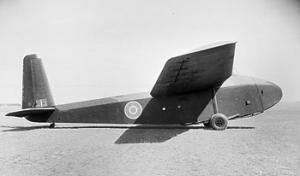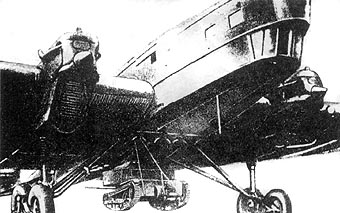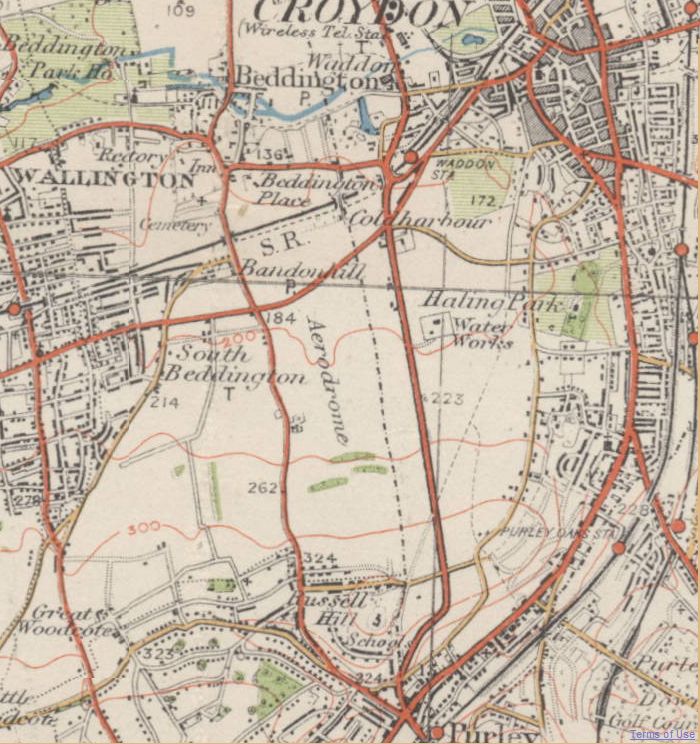|
Baynes Bat
The Baynes Bat (or sometimes Slingsby-Baynes Bat) was an experimental glider of the Second World War, designed by L. E. Baynes. It was used to test the tailless design that he had suggested as a means to convert tanks into temporary gliders so they could be flown into battle. Design and development In the late 1930s, armies were looking for a way to airlift heavy military units. There were then no cargo aircraft big enough to lift a tank, and even if such a large aircraft had been created it would have needed many special facilities. A solution which was explored during the Second World War was to tow tanks as gliders, and for this wings had to be added. Most designs were based on straight wings with extended empennage and stabilizers. The design of L.E. Baynes AFRAeS in 1941 was for a 100 ft wingspan "Carrier Wing Glider" consisting chiefly of a swept wing with vertical stabilizers on the wingtips. A 1/3 scale prototype was built entirely of wood in 1943 by Slingsby S ... [...More Info...] [...Related Items...] OR: [Wikipedia] [Google] [Baidu] |
Slingsby Aviation
Slingsby Aviation was a British aircraft manufacturer based in Kirkbymoorside, North Yorkshire, England. The company was founded to design and build gliders and sailplanes. From the early 1930s to around 1970 it built over 50% of all British club gliders and had success at national and international level competitions. It then produced some powered aircraft, notably the composite built Firefly trainer, before becoming a producer of specialised composite materials and components. The business is now known as Marshall Advanced Composites and produces composite parts for ships, submarines and aircraft. It is a subsidiary of Marshall of Cambridge. History The business was founded in Scarborough by Frederick Nicholas Slingsby, an RAF pilot in World War I. In 1920 he bought a partnership in a woodworking and furniture factory in Queen Street, Scarborough. In 1930 Slingsby was one of the founders of the Scarborough Gliding Club. After repairing some of the club's gliders, Sling ... [...More Info...] [...Related Items...] OR: [Wikipedia] [Google] [Baidu] |
Flight Lieutenant
Flight lieutenant is a junior commissioned rank in air forces that use the Royal Air Force (RAF) system of ranks, especially in Commonwealth countries. It has a NATO rank code of OF-2. Flight lieutenant is abbreviated as Flt Lt in the Indian Air Force (IAF) and RAF, and as FLTLT in the Pakistan Air Force (PAF), Royal Australian Air Force (RAAF) and Royal New Zealand Air Force (RNZAF) and has sometimes also been abbreviated as F/L in many services; it has never been correctly abbreviated as "lieutenant". A flight lieutenant ranks above flying officer and below a squadron leader and is sometimes used as an English language translation of a similar rank in non-English-speaking countries. The rank originated in the Royal Naval Air Service (RNAS) in 1914. It fell into abeyance when the RNAS merged with the Royal Flying Corps during the First World War but was revived in 1919 in the post-war RAF. An RAF flight lieutenant is the equivalent of a lieutenant in th ... [...More Info...] [...Related Items...] OR: [Wikipedia] [Google] [Baidu] |
Cancelled Military Aircraft Projects Of The United Kingdom
Cancel or cancellation may refer to: *Flight cancellation and delay, not operating a scheduled flight Sociology * Cancel culture, boycott and ostracism calling out offensive behavior on social media or in real life Technology and science *Cancel leaf, a bibliographic term for replaced leaves in printed books *Cancellation property, the mathematical property if ''a''×''b'' = ''a''×''c'' then ''b'' = ''c'' **Cancelling out, a technique for simplifying mathematical expressions *Catastrophic cancellation, numerical error arising from subtracting approximations to nearby numbers *Noise cancellation, a method for reducing unwanted sound *Phase cancellation, the effect of two waves that are out of phase with each other being summed *Cancel message, a special message used to remove Usenet articles posted to news servers *Cancel character, an indication that transmitted data are in error or are to be disregarded * Resolution rule, in propositional logic a valid inference rule t ... [...More Info...] [...Related Items...] OR: [Wikipedia] [Google] [Baidu] |
Slingsby Aircraft
Slingsby may refer to: * Slingsby (surname) * Slingsby, North Yorkshire * Slingsby Aviation, formerly Slingsby Sailplanes, a manufacturer of gliders and other aircraft * Slingsby Channel Slingsby Channel is a strait on the north side of Bramham Island in the Queen Charlotte Strait region of the British Columbia Coast, Central Coast of British Columbia. It is one of only two entrances to Seymour Inlet and the associated maze of wate ..., a strait in the Queen Charlotte Strait region of the Central Coast of British Columbia, Canada * Slingsby Baronets * HC Slingsby PLC, a historical British company started in 1893 {{disambiguation ... [...More Info...] [...Related Items...] OR: [Wikipedia] [Google] [Baidu] |
Glider Aircraft
A glider is a fixed-wing aircraft that is supported in flight by the dynamic reaction of the air against its lifting surfaces, and whose free flight does not depend on an engine. Most gliders do not have an engine, although motor-gliders have small engines for extending their flight when necessary by sustaining the altitude (normally a sailplane relies on rising air to maintain altitude) with some being powerful enough to take off by self-launch. There are a wide variety of types differing in the construction of their wings, aerodynamic efficiency, location of the pilot, controls and intended purpose. Most exploit meteorological phenomena to maintain or gain height. Gliders are principally used for the air sports of gliding, hang gliding and paragliding. However some spacecraft have been designed to descend as gliders and in the past military gliders have been used in warfare. Some simple and familiar types of glider are toys such as paper planes and balsa wood gliders. Etym ... [...More Info...] [...Related Items...] OR: [Wikipedia] [Google] [Baidu] |
1940s British Experimental Aircraft
Year 194 ( CXCIV) was a common year starting on Tuesday (link will display the full calendar) of the Julian calendar. At the time, it was known as the Year of the Consulship of Septimius and Septimius (or, less frequently, year 947 '' Ab urbe condita''). The denomination 194 for this year has been used since the early medieval period, when the Anno Domini calendar era became the prevalent method in Europe for naming years. Events By place Roman Empire * Emperor Septimius Severus and Decimus Clodius Septimius Albinus Caesar become Roman Consuls. * Battle of Issus: Septimius Severus marches with his army (12 legions) to Cilicia, and defeats Pescennius Niger, Roman governor of Syria. Pescennius retreats to Antioch, and is executed by Severus' troops. * Septimius Severus besieges Byzantium (194–196); the city walls suffer extensive damage. Asia * Battle of Yan Province: Warlords Cao Cao and Lü Bu fight for control over Yan Province; the battle lasts for over 1 ... [...More Info...] [...Related Items...] OR: [Wikipedia] [Google] [Baidu] |
Tetrarch Tank
The Light Tank Mk VII (A17), also known as the Tetrarch, was a British light tank produced by Vickers-Armstrongs in the late 1930s and used during the Second World War. The Tetrarch was the latest in the line of light tanks built by the company for the British Army. It improved upon its predecessor, the Light Tank Mk VIC, by introducing the extra firepower of a 2-pounder gun. The War Office ordered 70 tanks, an order that eventually increased to 220. Production was delayed by several factors and only 100 to 177 of the tanks were produced.Tucker (p. 90) states that 177 of the Mk VIIs were built during the war, but Flint (p. 12) states that whilst this figure is given in most published sources, surviving War Office documentation gives a lower figure of 100, putting the final tally somewhere between these two figures. The design flaws of the tank, combined with the decision by the War Office not to use light tanks in British armoured divisions, ruled out the use of Tetrarchs in ... [...More Info...] [...Related Items...] OR: [Wikipedia] [Google] [Baidu] |
General Aircraft Hamilcar
The General Aircraft Limited GAL. 49 Hamilcar or Hamilcar Mark I was a large British military glider produced during the Second World War, which was designed to carry heavy cargo, such as the Tetrarch or M22 Locust light tank. When the British airborne establishment was formed in 1940 by the order of Prime Minister Winston Churchill it was decided to develop a large glider which would be able to transport heavy equipment in support of airborne troops. General Aircraft Limited were chosen in January 1941 to develop this glider, which they designated the GAL. 49 'Hamilcar'. It was designed to transport a light tank or two Universal Carriers. A number of problems, which included vacillation by the War Office on the number of gliders it wanted and poor management by GAL, led to delays in the production of the Hamilcar and it was not until mid-1943 that the first production glider was assembled. These problems were only partially solved and production of the glider continued to be ... [...More Info...] [...Related Items...] OR: [Wikipedia] [Google] [Baidu] |
Antonov A-40
The Antonov A-40 ''Krylya Tanka'' (russian: крылья танка, meaning "tank wings") was a Soviet attempt to allow a tank to glide onto a battlefield after being towed aloft by an airplane, to support airborne forces or partisans.Winchester 2005, p. 62 A prototype was built and tested in 1942, but was found to be unworkable. This vehicle is sometimes called the ''A-40T'' or ''KT''. Design and development Instead of loading light tanks onto gliders, as other nations had done, Soviet airborne forces had strapped T-27 tankettes underneath heavy bombers and landed them on airfields. In the 1930s, there were experimental efforts to parachute tanks or simply drop them into water. During the 1940 occupation of Bessarabia, light tanks may have been dropped from a few meters up by TB-3 bombers, which, as long as the gearbox was in neutral, would allow them to roll to a stop. The biggest problem with air-dropping vehicles is if their crews are dropped separately, they may be ... [...More Info...] [...Related Items...] OR: [Wikipedia] [Google] [Baidu] |
Croydon Airport
Croydon Airport (former ICAO code: EGCR) was the UK's only international airport during the interwar period. Located in Croydon, South London, England, it opened in 1920, built in a Neoclassical style, and was developed as Britain's main airport, handling more cargo, mail, and passengers than any other UK airport at the time. Innovations at the site included the world's first air traffic control and the first airport terminal. During World War II the airport was named RAF Croydon as its role changed to that of a fighter airfield during the Battle of Britain; and in 1943 RAF Transport Command was founded at the site, which used the airport to transport thousands of troops into and out of Europe. After the Second World War, its role returned to civil aviation, but the role of London's primary international airport passed to London Heathrow Airport. Croydon Airport closed in 1959. It had been known under eight different names while it was active. In 1978, the terminal buildin ... [...More Info...] [...Related Items...] OR: [Wikipedia] [Google] [Baidu] |
Robert Kronfeld
Squadron Leader Robert Kronfeld, AFC (5 May 1904 – 12 February 1948) was an Austrian-born gliding champion and sailplane designer of the 1920s and 30s. He became a British subject and an RAF test pilot. He was killed testing a glider in 1948. Early life Kronfeld was born in Vienna, the son of dentist also called Robert Kronfeld (1874–1946), who was nephew of Adolf Kronfeld (de) (doctor, writer), Ernst Moriz Kronfeld (de) (botanist), both Galician Jews. In his youth his favourite sport was boating. Gliding As a young man, he visited the Wasserkuppe in Germany and became passionate about the sport of gliding that was developing there. So Kronfeld became a member of the first Austrian gliding school. He befriended Walter Georgii, who was a meteorologist working at the nearby Darmstadt University of Technology and who had recently discovered thermals. Kronfeld became something of a test-pilot for Georgii, investigating this still-new phenomenon with the assistance of a v ... [...More Info...] [...Related Items...] OR: [Wikipedia] [Google] [Baidu] |
Yorkshire
Yorkshire ( ; abbreviated Yorks), formally known as the County of York, is a Historic counties of England, historic county in northern England and by far the largest in the United Kingdom. Because of its large area in comparison with other English counties, functions have been undertaken over time by its subdivisions, which have also been subject to History of local government in Yorkshire, periodic reform. Throughout these changes, Yorkshire has continued to be recognised as a geographic territory and cultural region. The name is familiar and well understood across the United Kingdom and is in common use in the media and the Yorkshire Regiment, military, and also features in the titles of current areas of civil administration such as North Yorkshire, South Yorkshire, West Yorkshire and the East Riding of Yorkshire. Within the borders of the historic county of Yorkshire are large stretches of countryside, including the Yorkshire Dales, North York Moors and Peak District nationa ... [...More Info...] [...Related Items...] OR: [Wikipedia] [Google] [Baidu] |

.jpg)






